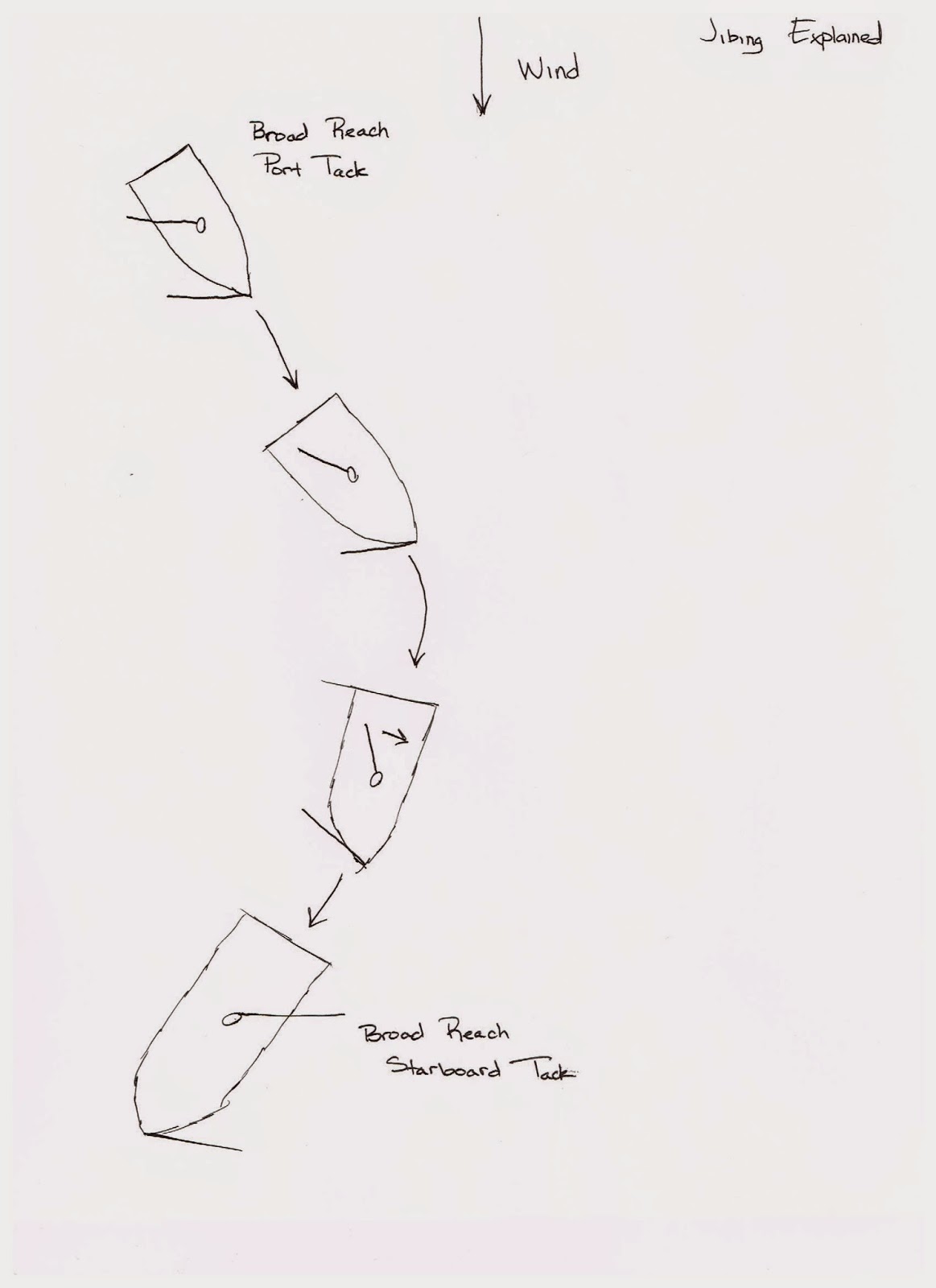If we have to turn while we are going downwind we will have to jibe. While there are some similarities, there are also some differences we have to deal with while jibing. Like tacking, there are two types of tacks, a port tack and a starboard tack. A port tack, like before, can be remembered as the wind hitting the boat on the port side. Likewise, a starboard tack can be remembered as the wind hitting from the starboard side.
Jibing can look from the outside to be a little more violent than tacking. One of the biggest things that the crew has to watch out for is the movement of the boom. While jibing, the helms person should be in complete control of what is happening.
If you take a look at my drawing below, you will see four boats. I will use each of these to describe what will happen at each moment. The top most boat will be position 1 and the bottom most will be position 4.
To keep everybody safe, the helms person is going to use a few key phrases to prepare everybody for what is happening. In position 2, the helms person will shout "prepare to jibe". At this time the crew will trim in the main most of the way and get it mostly centered on the boat. This will stop the boom from swinging too violently across the and causing problems. (While tacking, the boom will swing across but it will move pretty slowly. When jibing, the boom will move very quickly.) Once the main is trimmed, the crew will say "ready". Once ready, the helms person will start to slowly turn the boat and say "Jibe-O" as seen in position 3. When the crew starts to see the main jibe, they will release the sheets and allow the boom to go back out to where it needs to be as shown in position 4.
The jib can now be adjusted. The crew will release the jib sheet and trim on the opposite side.

No comments:
Post a Comment